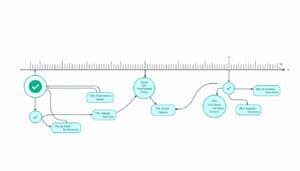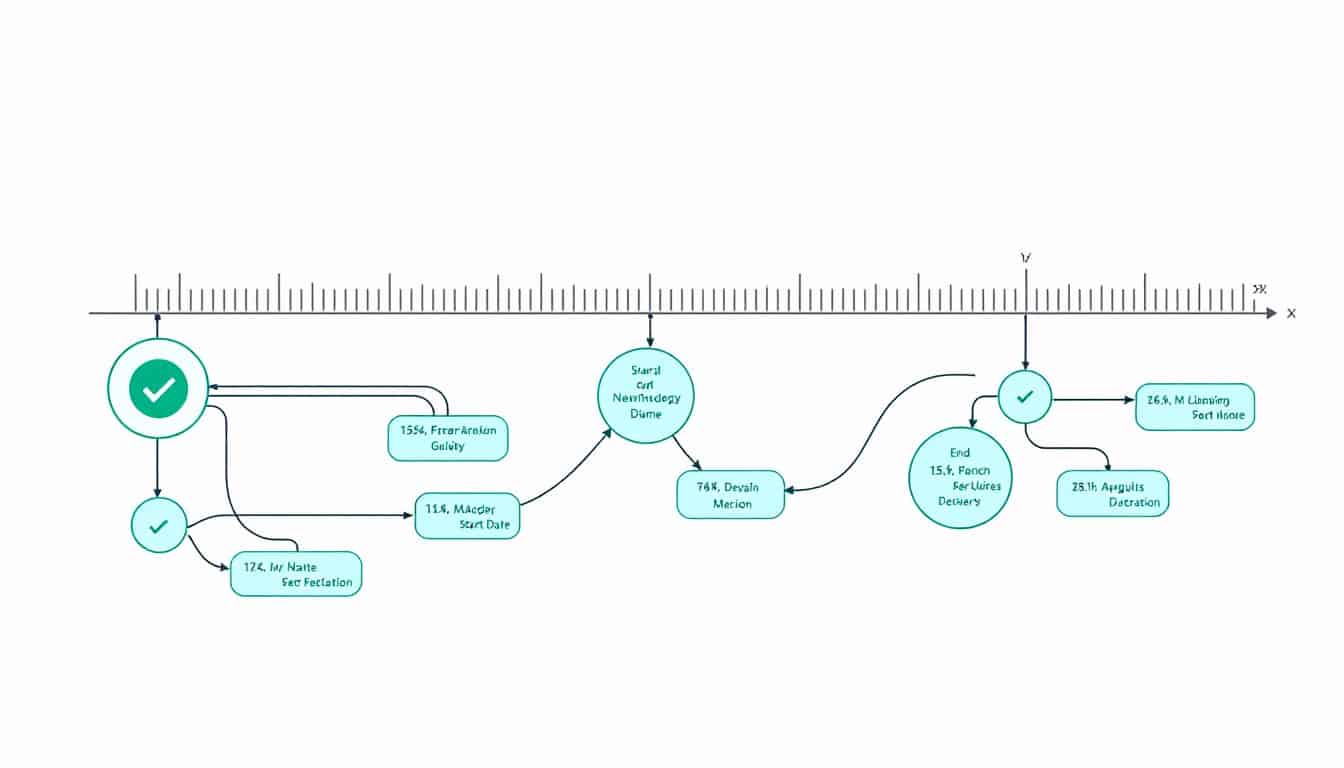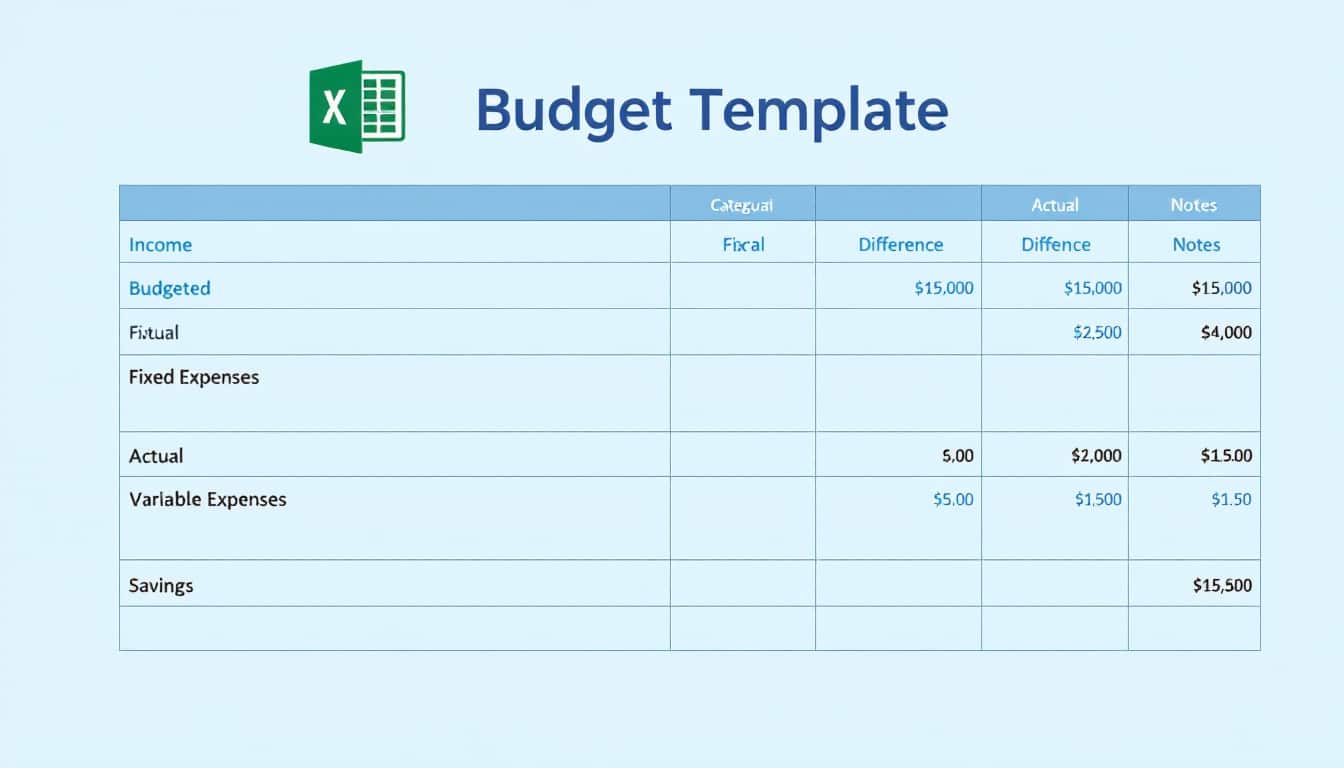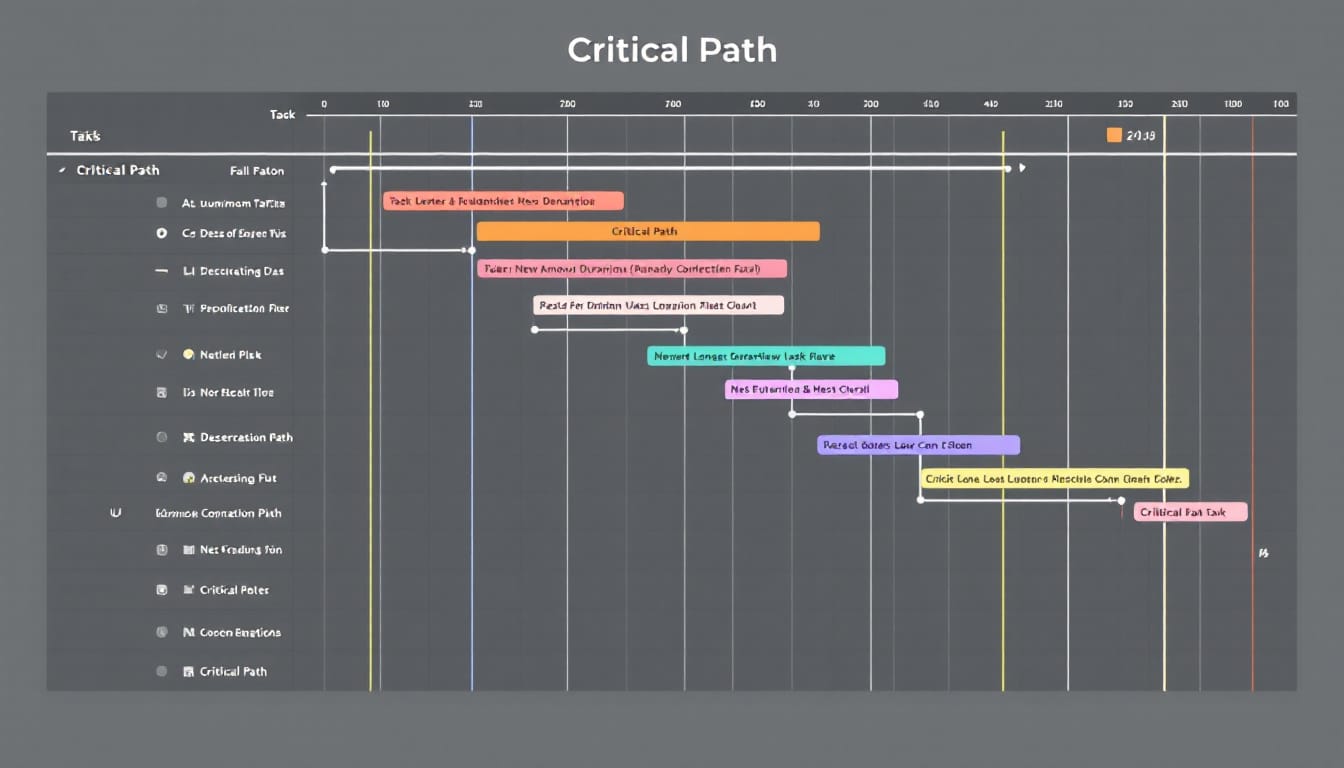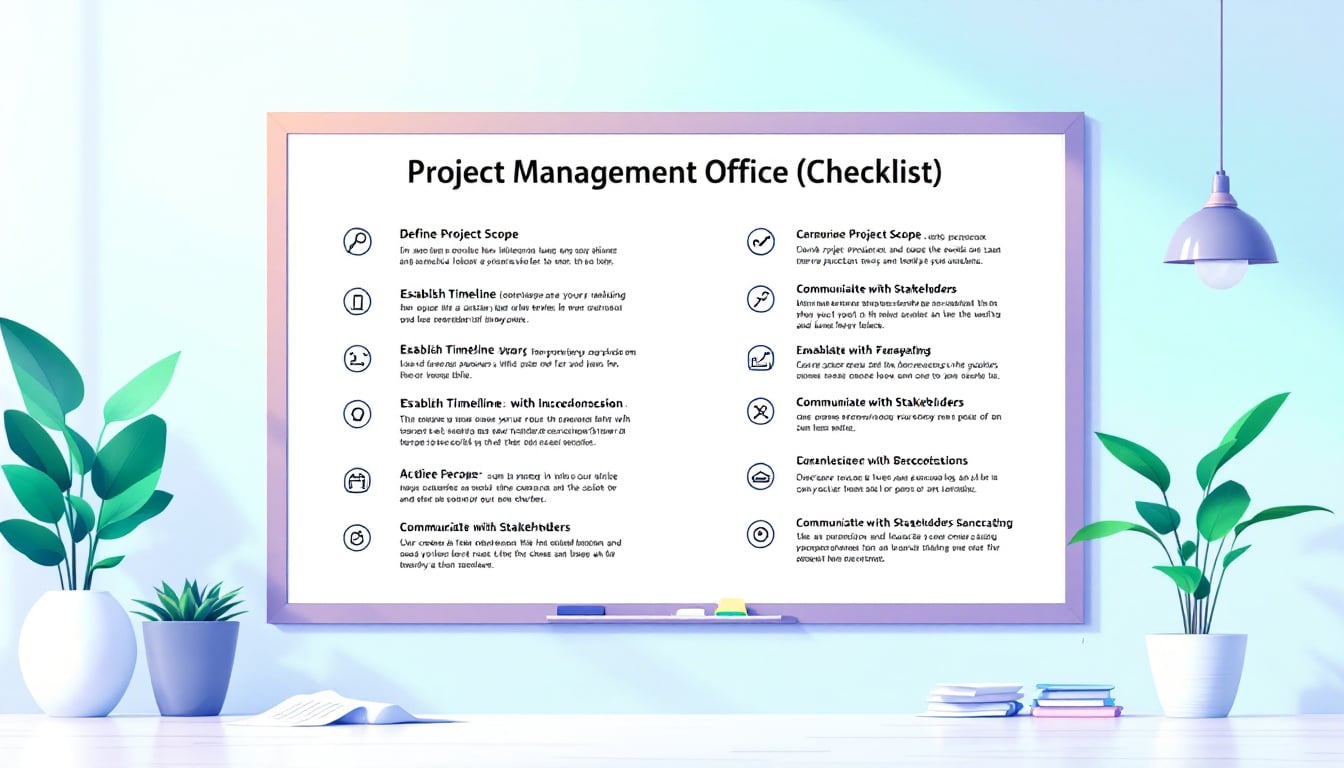“`html
🔥 Nous recommandons Ideamap
Ideamap est l’outil idéal pour un brainstorming ou un projet collaboratif. Grâce son interface facile et à ses fonctions IA, Ideamap booste votre créativité tout en favorisant une meilleure organisation de vos idées pour atteindre vos objectifs.
Project planning is a crucial step to ensure the success of any initiative. It helps structure objectives, timelines, tasks, and necessary resources.
In theory, developing a project plan may seem simple, but in practice, it can be complex without a clear method.
This article guides you through the essential steps to create an effective project plan and achieve your goals with confidence.
Project planning is much more than a simple task list. It is a methodical process that defines the objectives, timeline, resources, and strategies necessary for executing a project. By establishing this framework, every team member understands their responsibilities and the expectations related to their role.
A project plan consists of various formal documents that describe the execution and control phases. It includes risk management, resources, and communications, while addressing fundamental aspects such as scope, budget, and timeline. Planning tools like ProjectManager facilitate the creation of detailed plans through Gantt charts, task dependencies, and real-time tracking.
Why is it necessary to create a project plan? A good plan establishes clear procedures to follow, thus avoiding numerous future problems. It also allows for tracking progress and adjusting course if necessary, ensuring that the project remains aligned with its initial objectives.
To create an effective project plan, it is essential to define stakeholders, develop a work breakdown structure (WBS), estimate resources and costs, and establish a precise timeline. Identifying potential risks and assigning tasks clearly are also key steps to ensure the smooth running of the project.
Using project planning software offers numerous benefits, including the ability to collaborate in real time, track progress, and generate detailed reports. These tools surpass simple Excel templates by providing integrated and automated management of the different phases of the project.
By adopting a structured approach and using the right tools, you can transform project planning into a smooth and efficient activity, thus laying the groundwork for the success of your initiatives.

What is project planning?
Project planning is a crucial step in the successful management of any project, whether it involves building major infrastructure or developing an innovative application. It involves clearly defining the objectives, timeline, tasks, resources, and strategies necessary for executing the project. By establishing a solid framework, planning allows for determining what needs to be done, when, and by whom, ensuring that every team member understands their role and responsibilities.
A well-developed project plan serves as a roadmap throughout the project’s life cycle, providing a constant reference for assessing progress and adjusting actions as needed. Typical elements of a project plan include tasks to be completed, allocated resources, deadlines, and responsibilities assigned to each team member. Additionally, it also covers risk management, communication, and the baselines for scope, cost, and schedule.
To delve deeper into this concept, decision tree analysis in project management is an effective method for visualizing and planning various actions and their potential impacts, thereby reinforcing the structure of your planning.
Why is a project plan essential?
A project plan is essential for several fundamental reasons. First, it establishes a clear and shared vision of the objectives to be achieved, thus aligning all stakeholders around a common direction. This clarity helps avoid misunderstandings and divergences that could jeopardize the project’s success.
Secondly, a detailed project plan facilitates the management of resources, whether human, financial, or material. By precisely identifying needs in advance, it allows for optimal resource allocation, thus minimizing the risk of waste or shortage. Moreover, it serves as the basis for cost estimation and budget development, ensuring that the project remains financially viable throughout its duration.
Planning is also critical for monitoring and controlling the project. A good plan provides benchmarks for measuring progress and quickly identifying deviations from initial objectives. For example, by using tools like burndown charts, project managers can visualize task progress and adjust strategies in real-time to keep the project on track.
Finally, a well-structured project plan improves communication between team members and stakeholders. By clearly defining responsibilities and expectations, it fosters effective collaboration and reduces the risks of conflicts or delays. In summary, without rigorous planning, a project is vulnerable to unforeseen events and inefficiencies that can compromise its success.
What are the essential elements of a project plan?
A comprehensive project plan must include several key components to ensure effective management and successful execution. Here are the main elements to consider:
- Project Objectives: Clearly define what the project aims to achieve, with specific, measurable, achievable, relevant, and time-bound (SMART) objectives.
- Timeline: Establish a detailed schedule of activities and milestones, identifying deadlines and dependencies between tasks. The activity planning is crucial for visualizing the progress of the project.
- Budget: Estimate the costs associated with each task and establish a global budget, taking into account the necessary resources and any contingencies.
- Project Team: Identify team members, their roles and responsibilities, as well as the skills required to successfully complete various tasks.
- Risk Management: Identify potential risks, assess their impact, and define mitigation strategies to manage them effectively.
- Communication Plan: Define the channels and frequencies of communication between team members and stakeholders, ensuring transparent and regular information sharing.
- Quality Management: Establish quality standards and procedures to ensure that deliverables meet defined requirements. For more information, see the express guide on project quality management.
By integrating these elements into your project plan, you create a solid foundation that facilitates coordination, monitoring, and adjustment throughout the project life cycle. Each component plays a distinct but complementary role, contributing to the achievement of set objectives efficiently and effectively.
How to develop an effective project plan?
Developing an effective project plan requires a methodical and structured approach. Here are the essential steps to create a robust plan:
- Define stakeholders: Identify all persons or organizations involved in or affected by the project. Understanding their expectations and needs is crucial for guiding the planning.
- Assess the business case: Develop a business case that justifies the necessity of the project, highlighting expected benefits and return on investment.
- Define the project scope: Use a work breakdown structure (WBS) to specify the project boundaries, detailing what is included and what is not.
- Estimate resources and costs: Identify the necessary resources (human, material, financial) and estimate the costs associated with each task.
- Establish a timeline: Develop a detailed timeline by assigning start and end dates to each task, considering dependencies and constraints.
- Analyze risks: Conduct a decision tree analysis to identify potential risks and develop mitigation strategies.
- Assign responsibilities: Distribute tasks to team members based on their skills and availability, clearly defining their roles.
- Develop a communication plan: Establish how and when information will be shared between team members and stakeholders.
By following these steps, you ensure comprehensive planning that covers all critical aspects of the project. Using project planning software can greatly facilitate this process by automating certain tasks and providing advanced tracking tools.
What tools are indispensable for project planning?
Technology plays a decisive role in the planning and effective management of projects. Several tools can help you structure, track, and optimize your project plans:
Project management software: Platforms like ProjectManager allow you to create detailed plans with Gantt charts, facilitating the visualization of tasks, dependencies, and deadlines. They also offer real-time tracking features and customizable dashesboards.
Collaboration tools: Applications such as Slack or Microsoft Teams promote smooth communication among team members, enabling instant sharing of updates, files, and ideas.
Task tracking applications: Tools like Trello or Asana allow visual task management, facilitating assignment, progress tracking, and prioritization of activities.
Risk analysis tools: As mentioned earlier, decision tree analysis and other risk assessment tools help foresee and prepare responses to potential obstacles.
Moreover, integrating these tools with other platforms, such as quality management software or budget tracking systems, can provide a comprehensive and cohesive overview, thus facilitating informed and proactive decision-making.
What are the key phases of a project life cycle?
Understanding the different phases of a project life cycle is essential for effective management. The Project Management Institute (PMI) has identified five main phases:
1. Initiation
The initiation phase marks the start of the project, where objectives are defined and the project’s feasibility is assessed. This step includes developing the business case and formal acceptance of the project by stakeholders.
2. Planning
During the planning phase, all aspects of the project are detailed. This includes defining the scope, planning resources, estimating costs, establishing the timeline, and managing risks. This step culminates in the development of the complete project plan.
3. Execution
The execution phase involves implementing the planned tasks. This is where resources are mobilized and activities are carried out according to the plan. Regular meetings and status reports are essential to maintain control and alignment of team efforts.
4. Monitoring and Control
Alongside execution, the monitoring and control phase allows for measuring progress and ensuring the project remains on track. Key performance indicators (KPIs) are used to evaluate advancement and identify any deviations from the plan.
5. Closure
The closure phase marks the end of the project, where deliverables are handed over to stakeholders, contracts are finalized, and resources are released. A post-project evaluation is often conducted to identify lessons learned and improve future processes.
Each phase plays an essential role and uniquely contributes to the overall success of the project. Rigorous management and attention to each step ensure smooth progression and effective achievement of set goals.
How to manage risks in project planning?
Risk management is an indispensable component of project planning, enabling the anticipation and mitigation of potential obstacles. This proactive approach helps minimize negative impacts and maximize opportunities, thereby enhancing the chances of project success.
The first step is to identify potential risks. This can be done through team meetings, SWOT analyses (strengths, weaknesses, opportunities, threats), or using specific tools like decision trees. Once identified, each risk is assessed in terms of probability of occurrence and potential impact on the project.
After the assessment, it is crucial to develop mitigation strategies. This may include contingency plans, preventive measures, or risk transfers. For example, in case of a risk of delay in the supply chain, a contingency plan could include alternative suppliers or additional buffers integrated into the schedule.
Continuous monitoring of risks is also essential. Using project management tools such as burndown charts or specialized software allows for tracking the evolution of risks and adjusting mitigation strategies in real time.
Finally, transparent communication about risks with all stakeholders is fundamental. By actively involving them in the risk management process, you ensure a shared understanding of potential challenges and foster effective collaboration to overcome them.
By integrating rigorous risk management into your project plan, you strengthen your project’s resilience against unforeseen events and significantly increase your chances of success.
What are the benefits of using project planning software?
Using a project planning software offers numerous benefits that can transform how you manage your projects. These tools enable the automation, organization, and optimization of various aspects of project management, thus facilitating smoother and more effective execution.
One of the main advantages is the centralization of information. Project planning software allows you to consolidate all relevant data – tasks, calendars, resources, communications – in one place accessible to the entire team. This reduces the risk of information loss and facilitates collaboration.
Moreover, these tools provide advanced features for task tracking and management. For example, you can create interactive Gantt charts, assign specific tasks to team members, and define dependencies between tasks. This ensures clear visibility on project progress and allows for quick identification of bottlenecks.
Integrated communication tools are also a major asset. They allow for maintaining smooth communication among all team members, regardless of their geographical location. Features like real-time chat, automatic notifications, and document sharing facilitate effective collaboration and reduce response times.
Another key advantage is resource management. Planning software allows for real-time tracking of resource utilization, identifying overloads or underutilizations, and optimally reallocating resources to maximize efficiency.
Finally, analysis and reporting are simplified through customizable dashboards and automated reporting tools. You can generate detailed reports on various aspects of the project, such as progress, costs, risks, and team performance, thereby facilitating informed decision-making.
In summary, project planning software is an essential tool for improving organization, communication, and overall management of your projects, thus contributing to their success.
To discover powerful tools used by renowned organizations such as NASA and Bank of America, explore the available solutions and start your free trial today.
How to ensure quality in project planning?
Ensuring quality in project planning is essential to guarantee that deliverables meet expectations and defined standards. Rigorous quality management involves establishing precise criteria, implementing control processes, and continuous evaluation throughout the project life cycle.
The first step is to clearly define quality requirements from the project’s outset. This includes understanding stakeholder expectations, as well as applicable standards and regulations. Documenting these requirements in the scope statement serves as a reference throughout the project.
Next, it is crucial to develop a quality management plan. This plan should detail the quality standards to be met, the acceptance criteria for deliverables, and quality control and assurance methodologies. It should also define the responsibilities of each team member regarding quality.
The implementation of regular quality controls is also essential. This can include project reviews, quality audits, and validation testing of deliverables. Utilizing quality management tools can facilitate these processes by automating checks and providing detailed reports.
Additionally, ongoing training of team members on quality standards and best practices contributes to maintaining a high level of performance. Fostering a culture of quality within the team encourages individual commitment and accountability toward project quality objectives.
Finally, it is important to collect and analyze feedback from stakeholders throughout the project. This feedback allows for identifying areas needing improvement and adjusting processes accordingly, thus ensuring continuous adaptation and optimization of quality standards.
By integrating these practices into your project planning, you not only ensure compliance with initial requirements, but also exceed expectations, thus reinforcing stakeholder satisfaction and the overall success of the project.
How to monitor and adjust the project plan?
Monitoring and adjusting the project plan are dynamic and essential elements to ensure project success. Proactive monitoring allows for tracking task progress, identifying deviations from the initial plan, and taking corrective actions in a timely manner.
To start, establish key performance indicators (KPIs) that reflect the project’s objectives. These KPIs can include adherence to deadlines, cost control, quality of deliverables, and stakeholder satisfaction. By regularly tracking these indicators, you obtain an overview of the project’s health.
Using project management tools, like burndown charts, allows you to quickly visualize task progress and identify potential delays. These tools provide a graphical representation of progress, thus facilitating problem detection before they become critical.
In the case of significant deviations, it is crucial to reevaluate and adjust the plan. This may involve reallocating resources, adjusting deadlines, or modifying task priorities. Flexibility is key to adapting to unforeseen events and keeping the project on track.
Regular communication with the team and stakeholders is also fundamental. Frequent follow-up meetings allow for sharing progress, discussing encountered obstacles, and defining necessary corrective actions. Transparent communication fosters better collaboration and enhances responsiveness to challenges.
Finally, document all changes made to the project plan. This includes the reasons for adjustments, new strategies implemented, and potential impacts on other aspects of the project. Rigorous documentation facilitates tracking changes and ensures continuity in project management.
By integrating continuous monitoring and remaining ready to adjust the project plan, you significantly increase your chances of success, even in the face of unforeseen events and complex challenges.
What is the importance of communication in project planning?
Communication plays a central role in the effective planning and management of projects. Clear and effective communication ensures that all stakeholders are aligned on objectives, expectations, and responsibilities, which is essential for project success.
First, well-structured communication facilitates team coordination. By clearly defining roles and responsibilities, you avoid overlaps and gaps in task execution. Moreover, established communication channels allow for a smooth exchange of information, thus reducing the risks of misunderstandings or delays.
Next, communication is crucial for managing expectations. By regularly informing stakeholders of progress made, challenges faced, and decisions taken, you maintain a transparency that strengthens trust and commitment. This also allows for effectively managing changes and obtaining constructive feedback in a timely manner.
Furthermore, effective communication is essential for conflict management. Projects often involve collaboration among various individuals with differing perspectives and priorities. Open and respectful communication allows for resolving disagreements constructively, thus avoiding that conflicts negatively affect the project’s progress.
The communication tools integrated into project management software, such as instant messaging, discussion forums, and notification systems, can greatly facilitate these exchanges. They allow for centralized communication accessible to all team members, thus reinforcing cohesion and collaboration.
Finally, communication is critical for risk management. By regularly sharing information on the project’s status and signaling potential risks as they arise, you can react quickly and implement appropriate mitigation measures.
In summary, effective communication is the pillar upon which successful project planning rests. It ensures clarity, enhances collaboration, and facilitates proactive management of challenges, significantly contributing to the overall success of the project.
How to assess the success of project planning?
Assessing the success of project planning is essential for measuring the effectiveness of your strategies and identifying areas of improvement for future projects. Several criteria and methods can be used for this assessment:
Compliance with deadlines: One of the most obvious indicators of the success of planning is the ability to meet established deadlines. If the project has been completed on time, it reflects realistic and well-executed planning.
Cost management: Comparing actual expenditures to budget forecasts allows for verifying the accuracy of cost estimates and the efficiency of financial management. A financially controlled project demonstrates precise budget planning.
Quality of deliverables: Assessing whether deliverables meet established requirements and quality standards is another important criterion. High-quality deliverables reflect good planning and attention to detail.
Stakeholder satisfaction: Stakeholder perception of the project outcome is a key success indicator. Positive feedback means that the project has met or exceeded expectations.
Risk management: Analyzing how risks were identified and managed throughout the project allows measuring the responsiveness and adaptability of planning. Effective risk management minimizes negative impacts and contributes to the smooth progression of the project.
Team performance: Evaluating the effectiveness and collaboration of the project team provides insights into work dynamics and role distribution. A high-performing team indicates well-structured planning and effective human resource management.
For a thorough assessment, it is recommended to conduct post-project reviews or retrospective analyses. These sessions allow for discussing the strengths and weaknesses of the project, drawing lessons, and documenting recommendations for future projects.
The use of analysis and reporting tools can facilitate this assessment by providing precise and real-time data on various aspects of the project. This allows for continuous adjustments and constant improvement of planning processes.
By clearly defining success criteria and using appropriate evaluation methods, you can not only measure the effectiveness of your project planning but also optimize your practices for even greater future successes.







